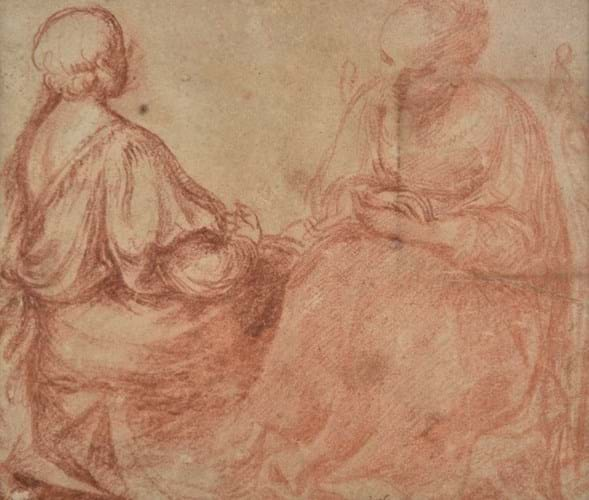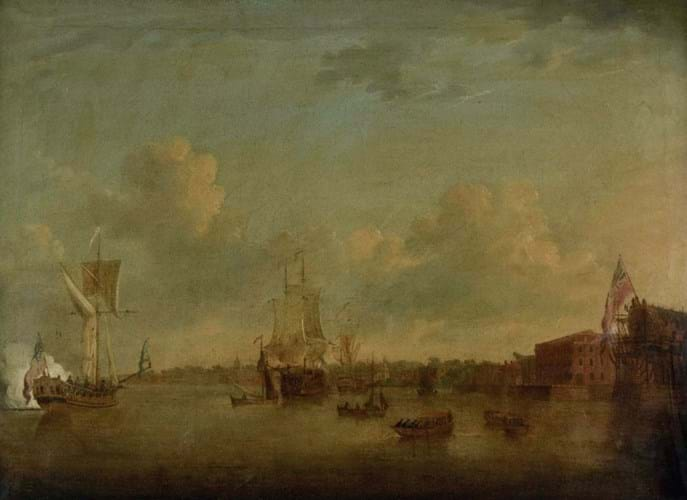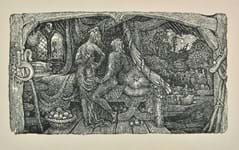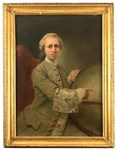
A drawing bearing a 19th century ink attribution to Antonio da Correggio (1489- 1534) was knocked down to a dealer based in London and New York.
Showing two seated women, the 6½ x 7½in (16 x 19cm) red chalk on laid paper was consigned from a longstanding private local collection. It had condition issues including a stain and closed tear to the right-hand margin.
A small circular blind stamp in the lower left corner of the drawing was identified by Dominic Winter specialist Nathan Winter as that of the Comte Moritz von Fries (1777-1826), a wealthy Viennese nobleman who owned a large art collection. This “key piece of historical information” added at least £500 to £1000 to the drawing’s value, he said.
Cautiously catalogued as ‘Italian School, possibly 16th century’, it was offered with a temptingly low £200-400 estimate and sold for £10,000.
“I was surprised it got that far on the day”, said Winter. “The bidders perhaps thought there was a case for a firmer attribution to Correggio. They may have discovered that it is a preliminary drawing of a known painting or a version by one of his pupils.”
Cleveley’s royal visit
Another private local consignment was a large historical painting of a royal visit attributed to the 18th century marine painter John Cleveley (c.1712-77).
The grimy scene depicted on the unsigned 2ft 2in x 3ft (66 x 91cm) oil on canvas was thought to depict Charles II travelling from the Royal barge to his yacht at Greenwich.
Heavily restored some time ago, it nevertheless drew bids from the phone and was secured by a private collector based in Greenwich for £8200, over four times the guide.
London-born to a Southwark joiner, Cleveley himself trained as a joiner and boat-builder before becoming a naval shipwright at Deptford and, from the 1740s, a self-taught painter and exhibitor of shipping and shipbuilding subjects.
He continued to work as a shipwright ‘in the pay of His Mjs Navy’ and was briefly seconded to work on the Victory, Nelson’s later flagship, at Chatham.
The artist is best known for his marine scenes of royal yachts, dockyard scenes, launches and English warships, combining his knowledge of shipbuilding to execute accurate architectural and topographical detail. Some of his best works have sold at auction for six-figure sums.















